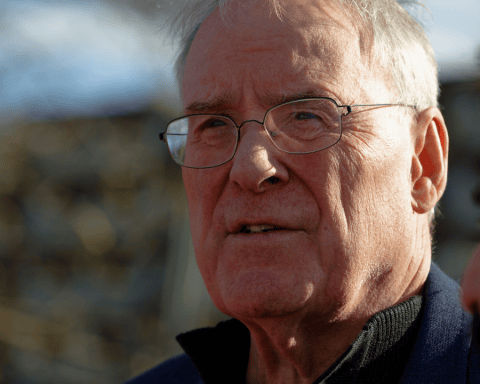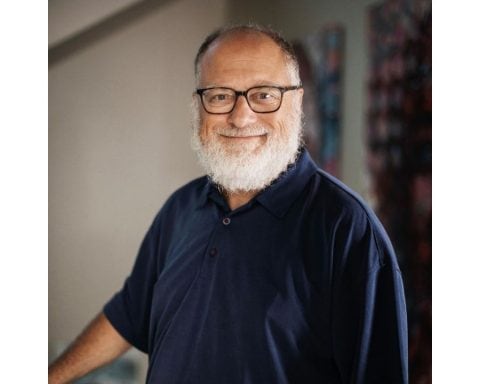IBERIA, Costa Rica – Howler monkeys roar fiercely at stray dogs scouring for morning scraps in a tree-lined alley, while an assortment of tropical birds perform aerial acrobatics in playful song. The rising sun conducts this daybreak symphony, which includes the occasional solo from a crowing rooster or bug-hunting woodpecker.
There’s no need for an alarm clock in Costa Rica. Nature does the job just fine, and the rich biodiversity that fills this Central American country with life is why ecotourism has become one of its largest and fastest-growing industries.
But Costa Ricans got a wake-up call of a different sort on October 13, 2008. That’s when then-president Oscar Arias declared by executive decree that an open-pit gold development proposed by a Canadian mining company – and opposed by a majority of citizens – was “in the national interest.”
Arias also lifted a moratorium that his predecessor, Abel Pacheco, put in place in 2002 to protect, in effect, the country’s booming ecotourism industry. In doing so, Arias set in motion a battle of wills, at times nasty, between citizens trying to remain true to their country’s environmental values and Calgary’s Infinito Gold, a foreign investor determined to profit from what it called “one of Central America’s premier gold projects.”
Several years of street protests – some of the largest in recent years – and court challenges have been met with defamation lawsuits and corporate posturing.
Opponents of open-pit mining have so far come out on top. The moratorium was reinstated, followed by a permanent ban, and Infinito’s concessions were just this year officially annulled. After years of intense dispute, however, both sides appear worse off than when they started. Meanwhile, Infinito refuses to go away – at least not quietly and without significant compensation to cover what it calculates as more than $1 billion in opportunity costs.
“The saga has, to my knowledge, no precedent in this country,” said Nicolas Boeglin, a professor of international and environmental law at the University of Costa Rica. Describing what unfolded as “sadly disappointing,” Boeglin, who is opposed to the Infinito project, said the decision by Arias to lift the ban should never have been made given how important sustainable development has become to the country’s economy.
Others say Infinito shares the blame for not cutting its losses earlier. Its persistence appeared to grow as the price of gold climbed. It took the gamble and, having lost the wager, has threatened to sue the country it courted for 13 years to cover what turned out to be a bad bet.
So how did this mess come to be?
Green vs. gold
Tour guide Mario Guzman stops his van and points to a scorched field where sweat-drenched workers in the open sun use machetes to chop down blackened sugarcane stalks. Fields are set on fire to remove leaves, chase away rats and poisonous snakes, and heat up the stalks to draw out the sugar. It’s hard labour, and few Costa Ricans will do it, said Guzman, explaining that such workers tend to be poor Nicaraguan migrants.
Certainly poverty is still a problem in Costa Rica. Job creation is a high priority, but the country has options. Having established more sustainable paths to creating wealth over the past three decades, Costa Rica today can better afford to be picky – to not pit its economy against its environment.
Costa Rica is by many measures the world’s top ecotourism destination. A growing number of foreigners are lured to its majestic volcanoes, national parks, cloud forests and world-class beaches. Since the mid-1980s, tourist visits to this stable democracy have jumped roughly nine-fold to 2.34 million in 2012. Tourism now represents about 7 per cent of Costa Rica’s GDP, with a vast majority of those dollars coming from job-creating ecotourism activities.
It took effort and long-term vision. A hundred years ago about 85 per cent of Costa Rica was covered by forest, but clearing for agriculture and cattle ranching reduced that cover to just 29 per cent by 1989, according to the World Resources Institute. In 1996, the country changed course. In a pioneering move, it began paying landowners to protect and regrow forests – an approach called “payment for ecosystem services.” The result is that forest cover today has surpassed 50 per cent, better supporting the biodiversity that has become crucial to tourism growth.
Consider, also, that nearly 95 per cent of electricity produced in Costa Rica comes from renewable sources, and a quarter of its land is protected by law. Little wonder the country ranked fifth out of 132 countries on Yale University’s 2012 Environmental Performance Index, putting it in the same league as Norway and Switzerland.
“Costa Rica has been extremely successful with ecotourism,” said Jose Maria Figueres, who was president between 1994 and 1998. While supportive of “responsible” mining during his presidency, he is also widely credited for putting in place the policies that would encourage sustainable economic development in the country. “The whole thrust was to make Costa Rica an example – proof that sustainable development was in fact possible, but also profitable,” Figueres told Corporate Knights.
It is against this dreamy, nature-embracing backdrop that Infinito’s Crucitas goldmine development was destined to emerge as controversial. Located in northern Costa Rica near the heavily forested border with Nicaragua, the proposed open-pit project encroaches on a large area that two endangered species call home – the mountain almond tree and the Great Green Macaw.
Generally speaking, open-pit gold mining is a notoriously dirty practice involving the clearing of forests, routine blasting of solid rock and use of a cyanide solution to separate small amounts of gold dispersed in tonnes of crushed ore. The cyanide chemically bonds with the gold as it seeps through large heaps of ore. The gold is then removed from the solution through a separate chemical process, leaving behind an artificial pond of cyanide that is typically reused. A main worry is that leaks and dust from operations will poison nearby rivers and lakes.
Such gold projects have a relatively small footprint compared to a cattle ranch or plantation, but it’s a heavy, toxic footprint that can leave behind deep scars. “It’s pretty much the most dangerous form of mining environmentally,” said Jamie Kneen at MiningWatch Canada, an advocate for responsible and sustainable mineral development.
That didn’t stop Infinito from promising its project would be, in its words, “environmentally benign.” Like many mining companies entering a new frontier, Infinito said it would do things differently. The company’s local operating subsidiary, Industrias Infinito, assured authorities and the Costa Rican public that pollution would be minimized and Las Crucitas would be fully restored once the gold was removed.
“I think they were honest in trying to do things differently,” said Carlos Manuel Rodriguez, Costa Rica’s former minister of environment and energy. The company committed to building roads and housing, establishing training programs, opening a new school, and creating hundreds of jobs for an impoverished region of the country, winning it some localized support. But Rodriguez wasn’t convinced Infinito knew what it meant to be environmentally sustainable in a sensitive tropical region. For example, the company needed to chop down old-growth forest on hundreds of hectares of property before it even began mining.
“They said, don’t worry, we will plant a lot of trees, and that just showed us how ignorant they were,” he said. “A tree plantation can’t replace an old-growth forest that is home to hundreds of species. These companies, even though they may have the best of intentions, they don’t have the know-how.”
Yet Infinito persisted. It also had a major shareholder willing to be patient. Ron Mannix, the media-shy multibillionaire from Alberta, owned a controlling stake in Infinito through his company Coril Holdings. Known for his local philanthropy, Mannix, 65, got his start in the construction and coal industry before taking over the family business with his brother, Fred. With one of Canada’s richest and most respected businessman behind the venture, Infinito gained instant credibility with the investment community.
Corporate Knights made several attempts to interview Mannix for this article, but e-mail and phone requests went unacknowledged up to the time of publishing. Likewise, requests were made to speak with Infinito chief executive John Morgan and Yokebec Soto, Industrias Infinito’s spokesperson in Costa Rica. Morgan did not reply. After several follow-up requests, Soto supplied a 530-page document in Spanish outlining the history of the Las Crucitas project. Beyond that, “we are not able to talk about any detail of the situation,” said Soto, citing the company’s attempt to resolve the dispute through international tribunal.
That document – along with corporate press releases, securities filings, and local media reports – paint a picture of a company getting mixed political signals. At the same time, it appears Infinito also misread (or ignored) a growing public desire to prevent Las Crucitas from going ahead. Yet Infinito persisted. It tried to work its way through a system clearly in transition, only to get pushback from citizens, the courts and bureaucratic agencies every step of the way.
Open pitfalls
The Crucitas project dates back to 1992, when Vancouver-based gold miner Placer Dome (since merged with Barrick Gold) obtained an exploration permit and began analyzing and mapping the region. Infinito Gold (then named Vannessa Ventures) purchased the project in 2000 and within 18 months had secured an exploitation permit from the Costa Rican government. All it needed was approval of its environmental impact assessment and it could get started on its big dig.
Price of gold: $300 an ounce.
What confidence the company might have had going into 2002, however, was deflated on April 7 when Pacheco was elected as Costa Rica’s new president. His Social Christian Unity Party was serious about sustainable development and, soon after taking charge, the new government announced a moratorium on open-pit mining.
Rodriguez, who served as Pacheco’s environment and energy minister, said open-pit projects brought high social and environmental costs but offered relatively little benefit, especially in a country known for ecotourism. Costa Rica, he said, only collected a tiny 2 per cent royalty on the extracted resource and it lacked the scientific capacity to monitor environmental compliance and verify that a company was meeting contractual obligations. Most often, ministry bureaucrats had to blindly trust and rely on the information the miners provided.
“We had just six scientists covering hundreds of concessions,” Rodriguez said.
If the government were ever to lift its moratorium, he said, the royalty would have to increase 15-fold to 30 per cent, where it stands in many developed countries. This would bring in enough revenues to hire more scientists, build up expertise and strengthen enforcement efforts.
At first Infinito believed its Crucitas project would be grandfathered because it had obtained its exploitation permit weeks prior to the moratorium taking effect. What it didn’t count on was two citizens stepping forward to question the validity of its permit through the courts.
The citizens argued, and the constitutional court agreed, that the concession was granted before approval of an environmental impact assessment. In other words, through no fault of the company, the issuance of Infinito’s permit was not legal. The company appealed the 2004 finding, but the constitutional court upheld its decision in 2006. The price of gold was now above $400 an ounce. Rather than try to recover its costs and walk away, Infinito stayed with it, choosing, according to a company press release, to interpret the constitutional court’s decision as only a “partial annulment” that could be rectified.
Glenn Ives, chair of consulting firm Deloitte Canada and head of its North and South American mining practice, said large, multinational mining companies can more easily afford to walk away from a specific project that is one among dozens. Small firms like Infinito face different pressures. In the case of Infinito, its assets in Costa Rica represented at least a third of its business prospects. “I have a lot of empathy,” said Ives, adding that it’s always a tough call for a small mining company in such situations. Ultimately, he said, “a company has to do what it thinks is appropriate for its shareholders.”
And those shareholders were buoyed by the change of government that came in 2006, when the National Liberation Party’s Arias replaced Pacheco as president. With the arrival of Arias, who had also been president during the late 1980s, came a much more conservative, trade-friendly administration.
Indeed, in 2008 the Arias administration lifted the moratorium on open-pit mining and in a surprise move the president himself issued a decree calling Las Crucitas “in the national interest.” With presidential approval, Infinito wasted little time. Almost immediately, it began clearing trees at the site in preparation for the mine. With the price of gold now about $700 an ounce, the company’s patience appeared to be paying off and it was eager to get started.
“With any luck, we’ll have gold bars by December 2009,” said Infinito’s Morgan in a story published by Canada’s Troy Media on October 30, 2008, just two weeks after the Arias decree. But Morgan spoke too soon. Shortly after he was interviewed for the article, Infinito was served with a court order requiring it to immediately cease its activities on the site. This was the result of yet another citizen challenge that would see the project thrown into four more years of legal limbo as two branches of the Costa Rican court system – constitutional and administrative – waded through the heated case, at one point disagreeing with each other.
The Arias decree had struck a deep public nerve. “You can’t imagine the public opinion outrage that followed,” recalled Rodriguez, who said the drama included hunger strikes by project opponents and a rise in the size and number of protests. “From that day forward it became hell for the government.”
It was also a personal hell for Arias, who received so much pushback from citizens that he reinstated the moratorium in April 2010, a month before leaving office. Later that year, an administrative appeals court annulled Arias’ presidential decree because of what it considered “irregularities.” At the same time, Costa Rica’s public ministry followed the court’s recommendation that it launch criminal investigations into the actions of Arias and several officials from his administration.
One area of focus has been the timing of an alleged $200,000 transaction to Arias’ Peace Foundation just days before the president issued his “national interest” decree. The newspaper La Nacion reported that the donation came from Infinito’s Mannix, but nothing has been proven in court. As part of their investigation, Costa Rican authorities are analyzing information it requested from the Canadian government. There’s no evidence to suggest Mannix or Infinito made an improper payment, and no charges have been laid against Arias.
Canada’s foreign affairs department has been keeping silent on the case. “I’m afraid there’s not too much we can say on the matter,” said department spokeswoman Caitlin Workman. “We can’t comment on state-to-state diplomatic communications.”
By 2010 the whole issue was so politically toxic that all candidates running for president that year vowed to keep the open-pit mining moratorium. In fact, it has since become a permanent fixture of law through a unanimous vote by Costa Rica’s congress.
A "bully" awakens
Infinito grew increasingly frustrated. By September 2011 gold had reached a record $1,924 (U.S.) an ounce, meaning the 1.2 million ounces of gold the company had hoped to start recovering in 2009 would have a market value of $2.3 billion – more than six times what it was 10 years earlier when it first began pursuing Las Crucitas.
The company’s tactics became noticeably more aggressive. Infinito began hitting its critics – academic and political – with lawsuits alleging it was a victim of criminal defamation. Boeglin, among at least a half dozen who were sued, was slapped with a $1 million suit based on critical comments he made in a university-directed documentary about Las Crucitas called Fool’s Gold. Boeglin was acquitted in a decision that was reaffirmed on appeal earlier this year.
Boeglin’s colleague, biology professor Jorge Lobo, was similarly sued and acquitted. But Infinito went further with Lobo, pressuring the university to prevent the professor from teaching a seminar that included a history of the Crucitas controversy. So disturbed by Infinito’s attempt to censor Lobo – and chill the academic community in Costa Rica – the Canadian Association of University Teachers, in a gesture of solidarity, urged Infinito to withdraw its lawsuit and stop meddling with university affairs in the country.
“This interference with academic activities is wholly inappropriate and significantly threatens academic freedom,” the association wrote in a strongly worded letter to Infinito’s Morgan and copied to John Baird, Canada’s minister of foreign affairs. “We are appalled to see such acts of intimidation against academics carried out by a Canadian company and concerned about the message it sends internationally regarding Canadians’ commitment to academic freedom, intellectual inquiry, free expression, and critical debate.”
Lawyers’ Rights Watch Canada also expressed outrage, as did eight other non-governmental organizations in Canada, including the Council of Canadians and Sierra Club Canada. In a jointly written letter to Morgan in April, they also took issue with attempts by Infinito’s lawyers to have a judge removed from Costa Rica’s Constitutional Chamber of the Supreme Court because of his unfavourable view of the company’s case. The company’s behaviour, they argued, was an attempt to “override the will of a small, eco-friendly nation” and would “further sully Canada’s reputation in that country." Morgan did not reply to their letter, nor did any representative of Infinito, according to the groups.
Heading into 2013, Infinito continued to insist that after playing by the rules it had been caught in a “legal vacuum.” But any uncertainty around the legality of its Crucitas concession was put to rest in June, when the Constitutional Chamber of the Supreme Court unanimously rejected its appeal.
From the company’s perspective, Costa Rica was breaching its bilateral investment treaty with Canada. Its reaction to the court’s decision was to swiftly issue an ultimatum to the country: resolve the dispute in six months or be sued for more than $1 billion ($97 million invested to date plus “lost opportunity”) through the International Centre for Settlement of Investment Disputes, an arbitration tribunal funded by the World Bank and established to protect the rights of foreign investors. It would be the largest lawsuit ever launched against Costa Rica, equivalent to more than 2 per cent of its GDP.
Industrias Infinito’s Soto slammed the country in the local press, calling it a “threat to foreign investment” and one of the worst places in Latin America to invest. (In fact, the World Bank’s “Doing Business 2013” report places Costa Rica in the middle of the pack and calls it one of the world’s 10 most improved countries.) Soto also said the final Supreme Court ruling only “marks the beginning” of the company’s legal efforts. She added that Infinito would not leave the country until it was fully compensated.
Kneen at MiningWatch, who calls Infinito a “bully,” said the company’s persistence is baffling. “They’ve been told so many times to go away through various court rulings, you’d think the message would get through.”
When the dispute is eventually resolved, it is likely Costa Rica will have to pay some sort of penalty. “When you play by the rules, receive permits and invest, only to have a government change its mind – irrespective of why – there’s a cost to that, and that cost is determined in court,” said Ives at Deloitte. Rodriguez didn’t disagree. “The company has a fair right to ask for due compensation,” he conceded, at the same time calling “unfair” the demand for more than $1 billion.
Ives said such cases are becoming more common – in both developing and developed countries – and this is creating major challenges for the mining industry. Both sides can get emotional, and when companies resort to what are seen as aggressive tactics it doesn’t help their cause. “Fundamentally, you cannot build a mine in a place you are not welcome in. You just can’t do it. And if you try, the problems will just get bigger and bigger,” said Ives. “But if we want to live the lifestyle we’re accustomed to, we need mines. So how do we do them in the most environmentally friendly way possible? There are no easy choices.”
However it turns out, former president Figueres expressed pride in his country’s decision to draw a line, even if there will be short-term costs in doing so. “I am certain that a great majority of Costa Ricans would feel not only very happy, but would also feel this was the right thing to do,” he said.
“The country is holding true to its values. Investments such as open-pit mining are not necessarily the type of investing that generates in the medium and long term the best results and returns for Costa Rica.”





